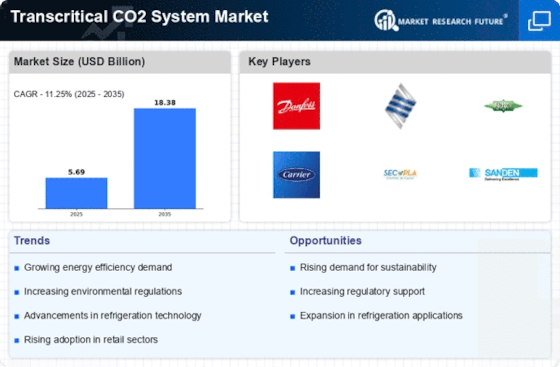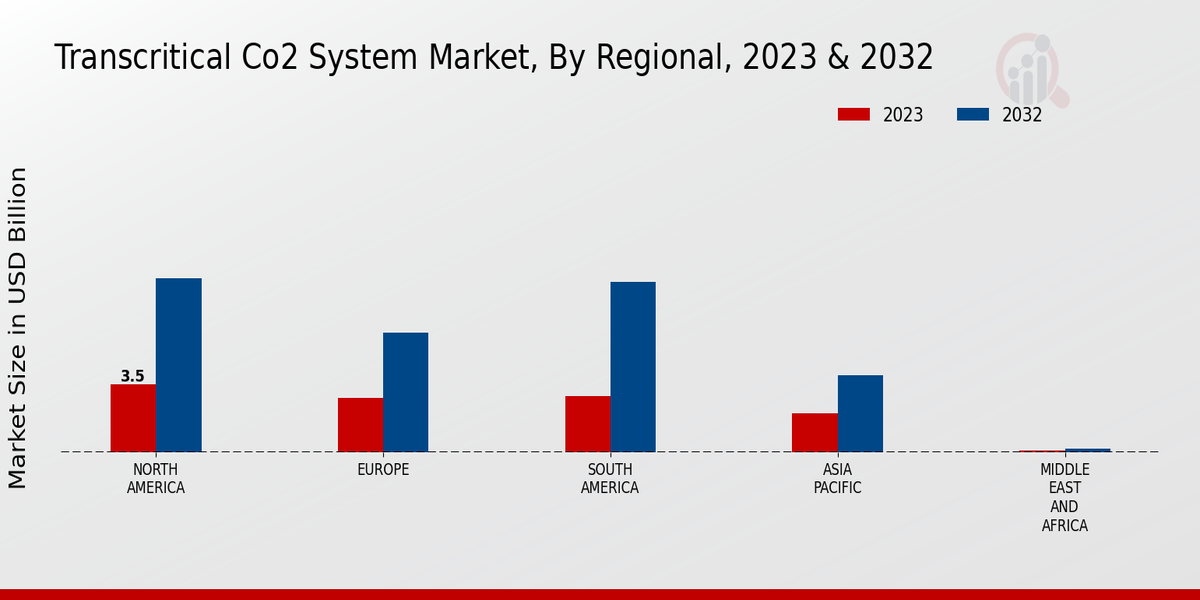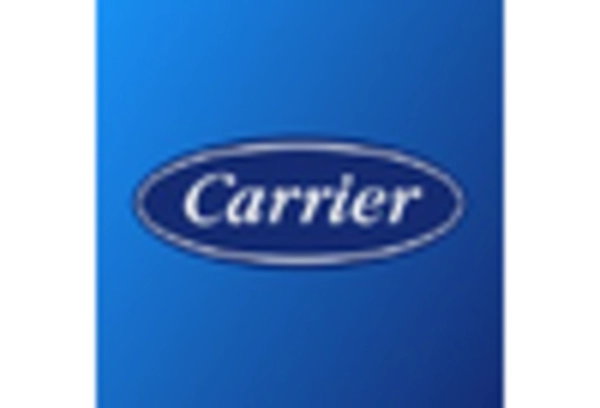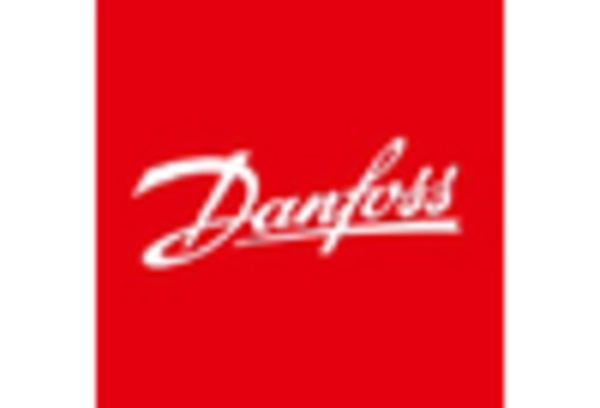Growing Environmental Regulations
The Transcritical Co2 System Market is significantly influenced by the increasing stringency of environmental regulations. Governments worldwide are implementing policies aimed at reducing greenhouse gas emissions and promoting the use of low-impact refrigerants. Transcritical CO2 systems align well with these regulations, as they utilize a natural refrigerant that has a low global warming potential. The regulatory landscape is expected to continue evolving, with more countries adopting measures that favor environmentally friendly technologies. This shift is likely to bolster the market for transcritical CO2 systems, as businesses seek compliance while also enhancing their corporate social responsibility initiatives.
Rising Demand for Energy Efficiency
The Transcritical Co2 System Market is experiencing a notable increase in demand for energy-efficient refrigeration systems. As energy costs continue to rise, businesses are seeking solutions that not only reduce operational expenses but also minimize environmental impact. Transcritical CO2 systems, known for their high efficiency, are becoming a preferred choice in various sectors, including retail and food service. According to recent data, these systems can achieve energy savings of up to 30% compared to traditional refrigerants. This trend is likely to drive further adoption of transcritical CO2 systems, as companies aim to enhance their sustainability profiles while maintaining profitability.
Increased Awareness of Climate Change
The Transcritical Co2 System Market is witnessing a surge in awareness regarding climate change and its impacts. As consumers and businesses become more conscious of their carbon footprints, there is a growing preference for sustainable refrigeration solutions. Transcritical CO2 systems, which utilize a natural refrigerant, are perceived as a viable alternative to traditional systems that rely on synthetic refrigerants with high global warming potential. This shift in consumer behavior is likely to encourage manufacturers to invest in transcritical CO2 technology, thereby expanding its market presence and driving innovation in the sector.
Expansion of the Food and Beverage Sector
The Transcritical Co2 System Market is poised for growth due to the expansion of the food and beverage sector. As this industry continues to evolve, there is an increasing need for efficient and reliable refrigeration solutions to preserve food quality and safety. Transcritical CO2 systems offer a robust solution, providing effective cooling while adhering to environmental standards. The food and beverage sector's growth is projected to drive demand for advanced refrigeration technologies, including transcritical CO2 systems, as businesses seek to optimize their operations and meet consumer expectations for sustainability.
Technological Innovations in Refrigeration
The Transcritical Co2 System Market is benefiting from ongoing technological innovations that enhance the performance and reliability of CO2 refrigeration systems. Advances in compressor technology, heat exchangers, and control systems are making transcritical CO2 systems more efficient and easier to integrate into existing infrastructures. For instance, the development of variable speed compressors allows for better load management, which can lead to improved energy efficiency. As these technologies continue to evolve, they are expected to attract more investments and drive the adoption of transcritical CO2 systems across various applications, including commercial refrigeration and industrial processes.



















Leave a Comment